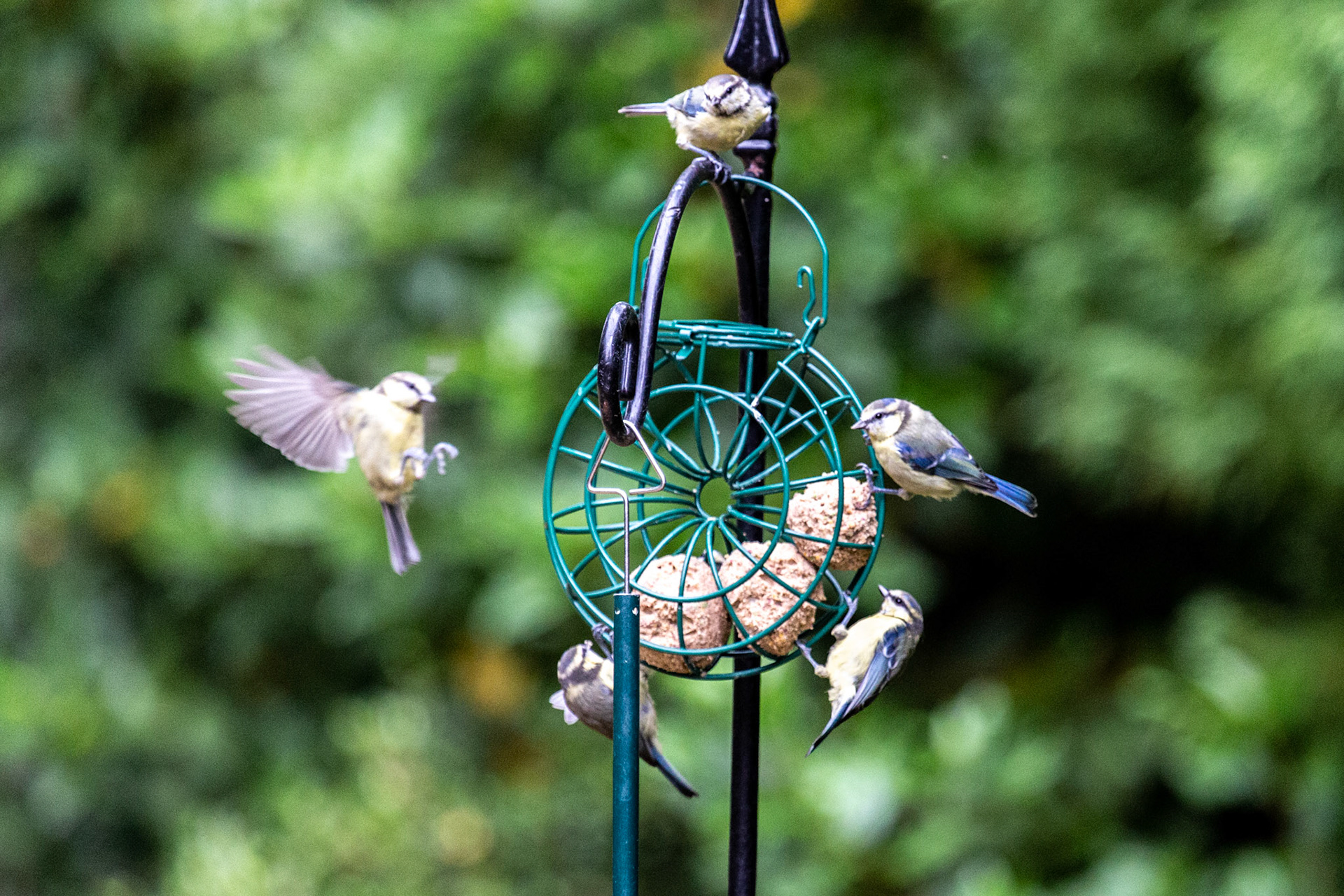
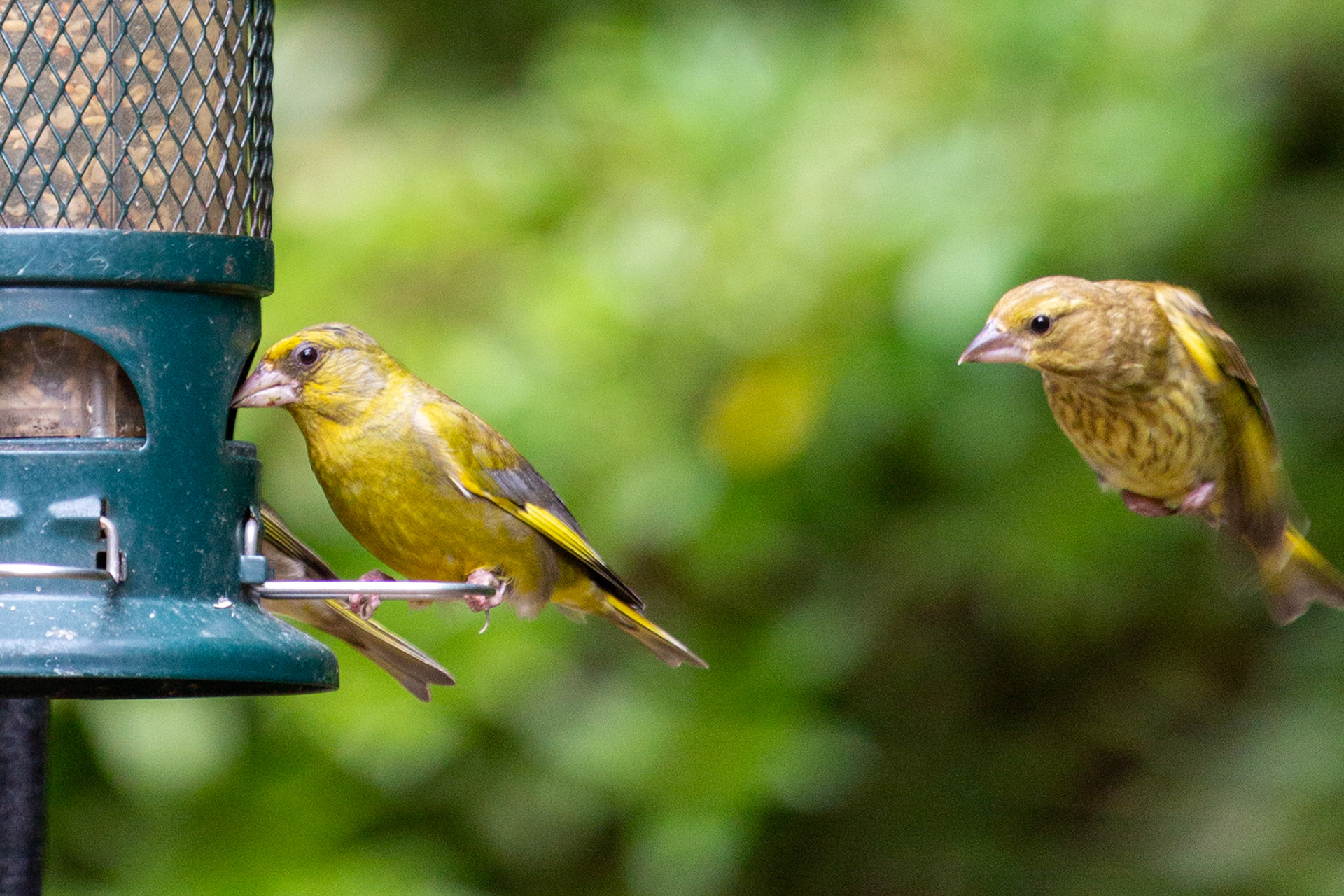
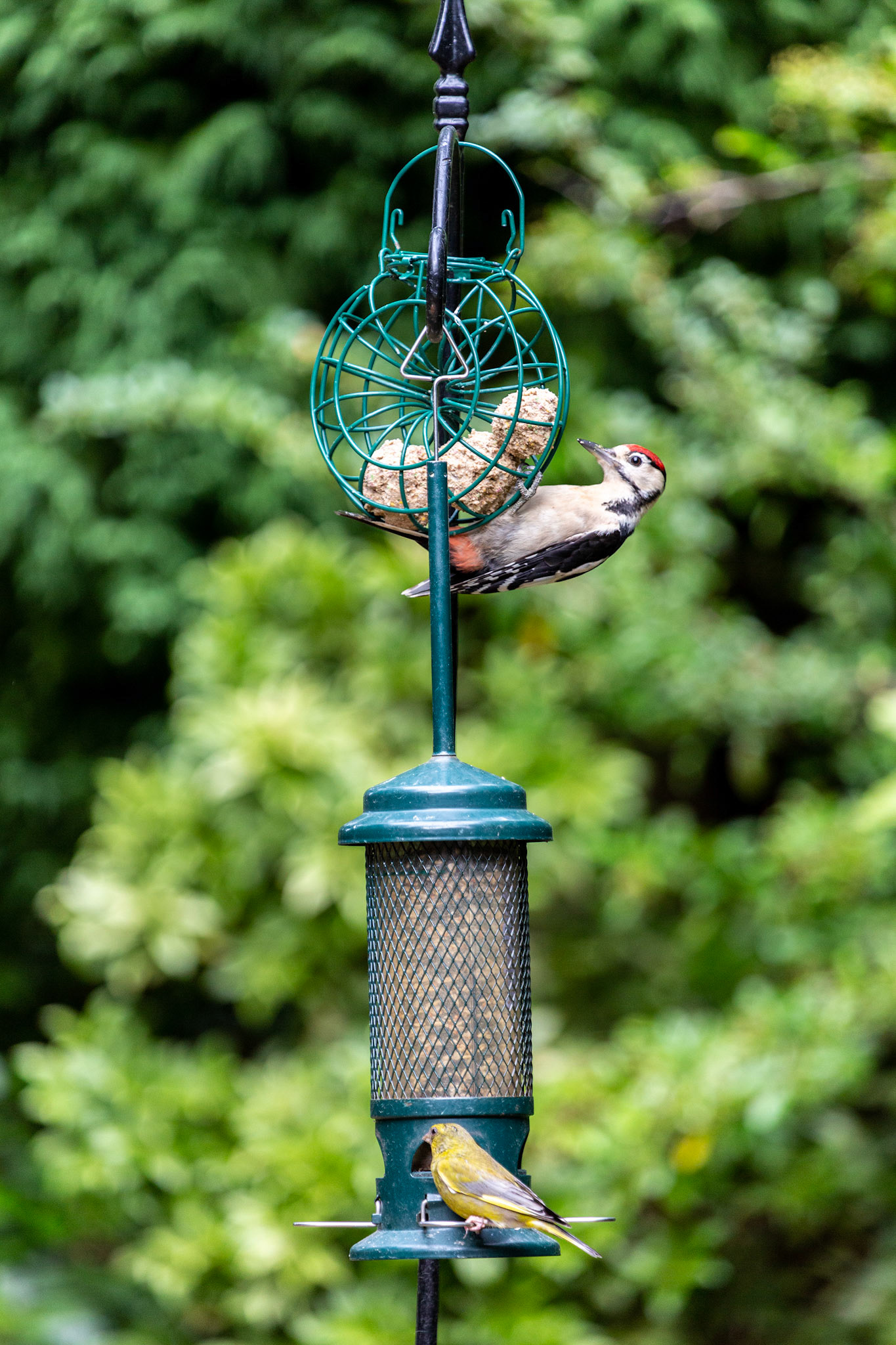
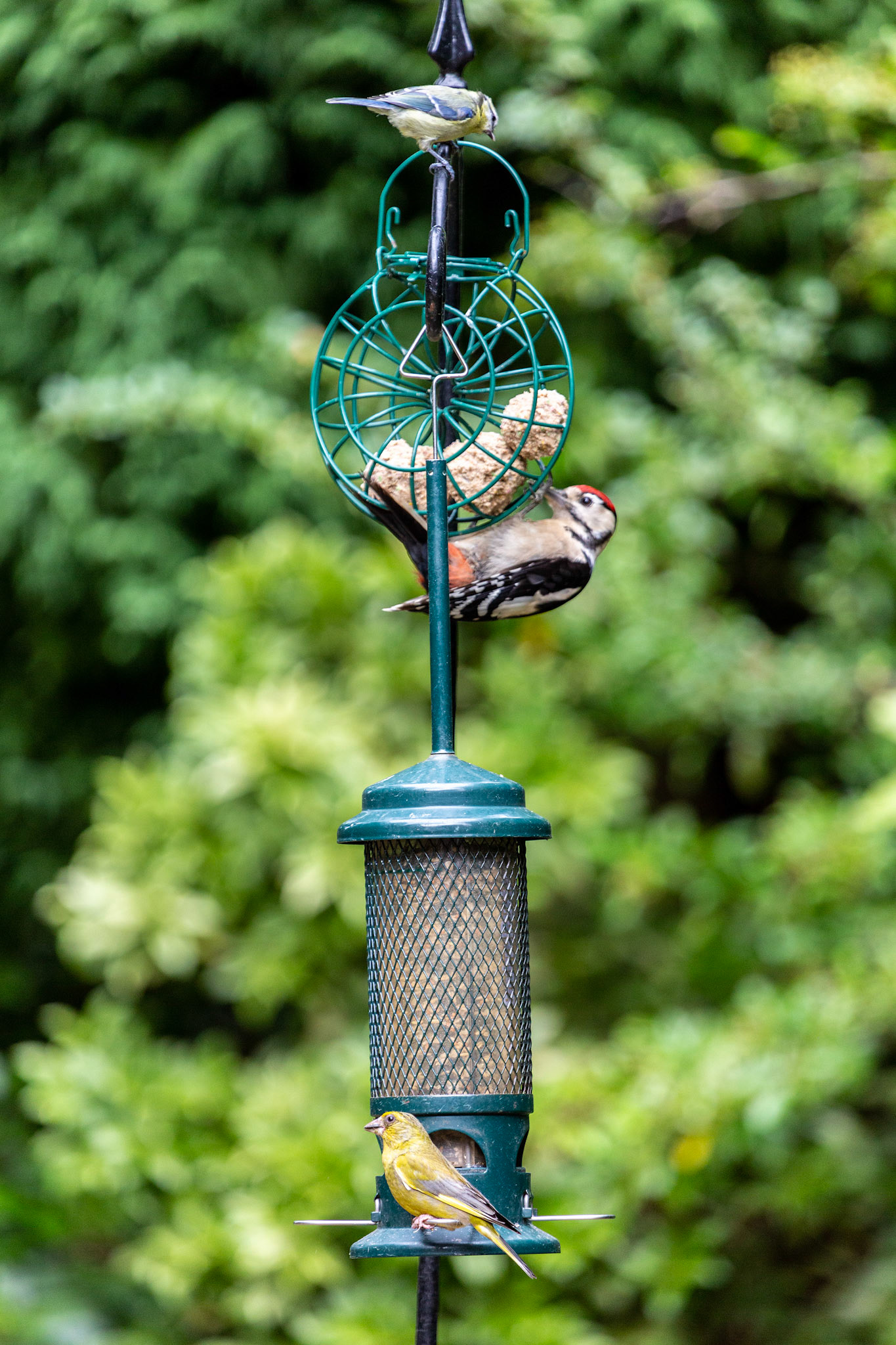
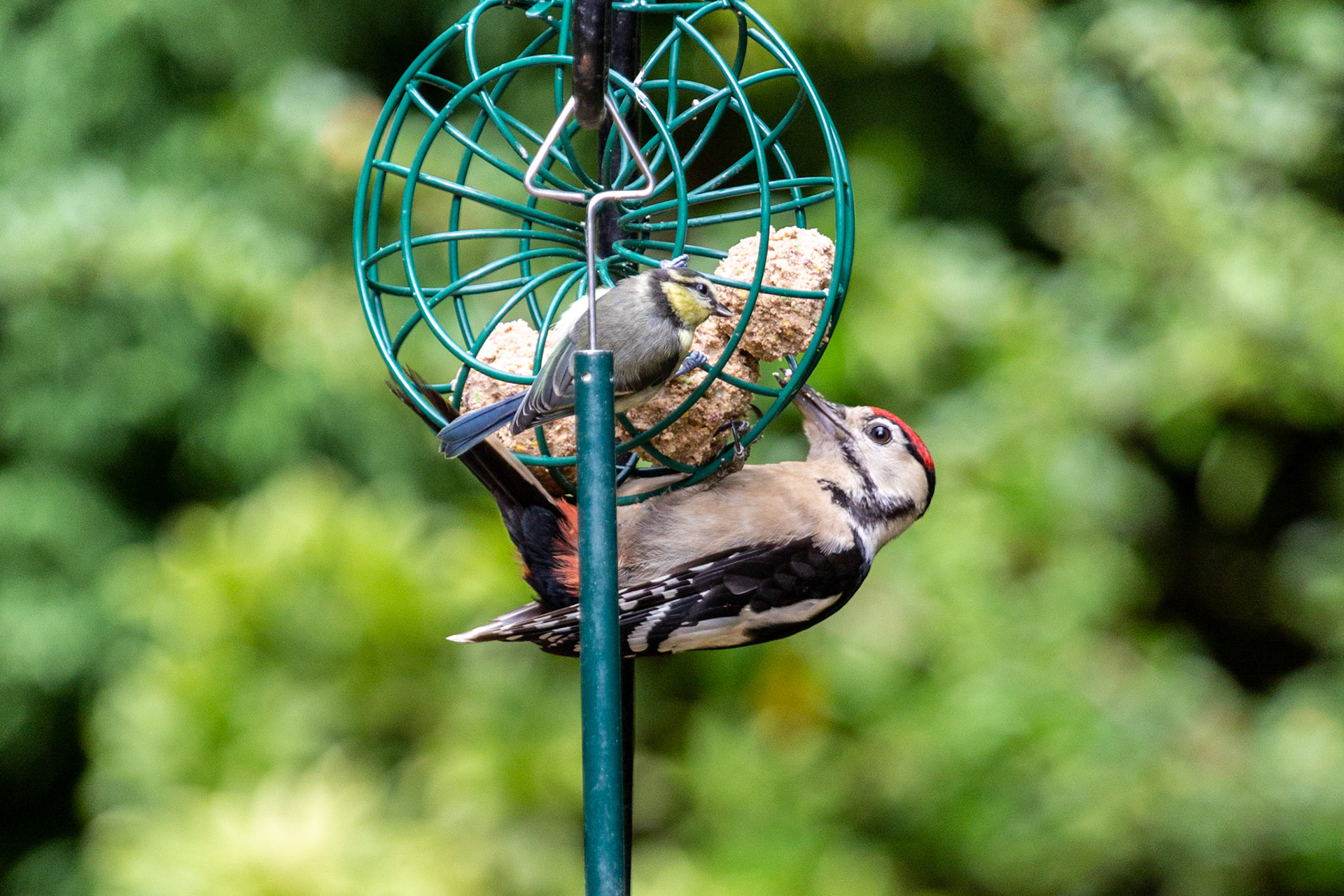
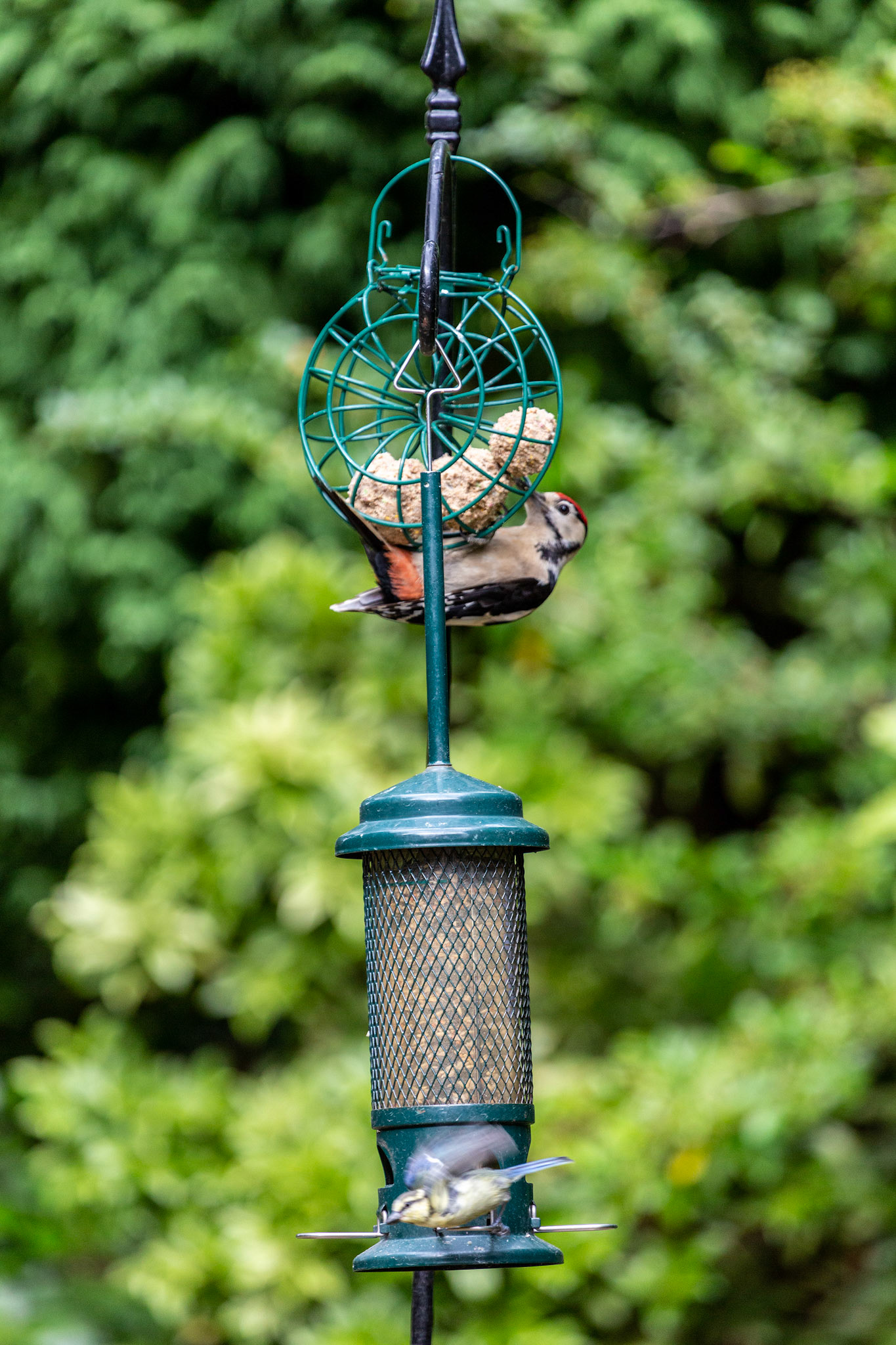
Following the highest July temperatures recorded - 36.2C at Wisley - the birds were out in numbers enjoying the fat balls and seed mix. Lots of young blue, coal and great tits, green and goldfinches, a young great-spotted woodpecker, robins, dunnocks and nuthatches.





